Shagun Mehandru, Monica Bhide and 18 others like it on FB.
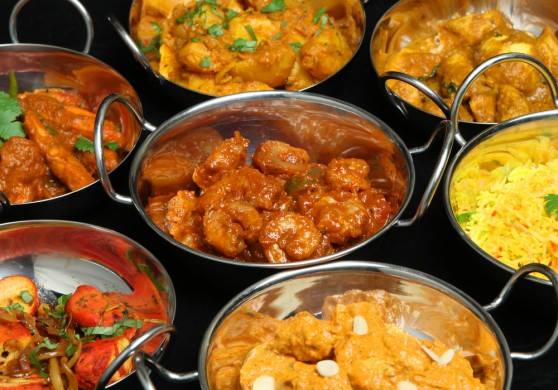
Curry Crusaders Conquer America
[dropcap] F[/dropcap]or most Indian immigrants the two most mouth-watering words in the English language are “Indian Food”.
Last summer I enjoyed a great culinary journey back to India: I visited Anjappar, a noted ‘military hotel’ in Chennai famous for its non-vegetarian Chettinad cooking , and also the iconic Sarvanna Bhavan beloved for its dosas, uttappams and other vegetarian delights. I next ate my favorite street foods at Kailash Parbhat, my family’s favorite Sindhi eatery in the by-lanes of South Mumbai. Final stop was of course the classic Moti Mahal in my hometown of Delhi where I’d first tasted the divine makhani murg or butter chicken in my childhood.
Yet you’ll be surprised to know that I visited all these treasure troves of regional cuisine without ever boarding a flight or stepping out of America!
My New York City mass transit card frugally took me to all of these restaurants by subway. Yes, it’s true – Moti Mahal, Anjappar, Sarvanna Bhavan and Kailash Parbhat, famous names in India, are all in Manhattan, New York now.
David Shaftel, who has tasted all these regional delights in India, noted this phenomenon of Indian chain restaurants being transplanted in America and observed in The New York Times: “In the New York outposts, authenticity is paramount — evidenced by their predominantly Indian clientele.”
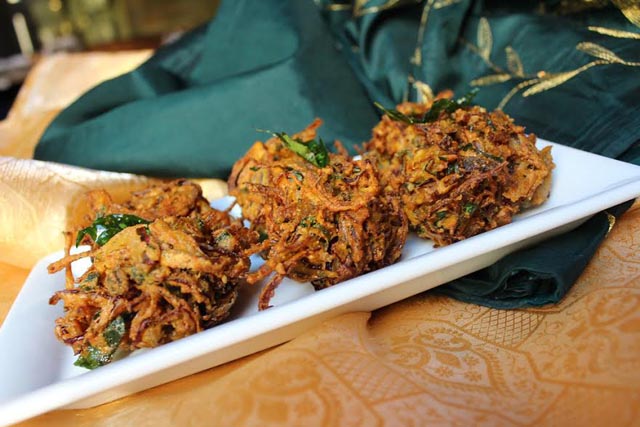
Red State, Blue State, Chicken Tikka Masala State
[dropcap]I[/dropcap]ndeed, the No. 1 reason for growth of Indian food in America is the ever-burgeoning Indian population in the US. Indian food eateries seem to sprout up wherever there are Indians – which is basically everywhere! Now Indian restaurants are all over the map of America – forget Red State and Blue State, you probably have Chicken Tikka Masala State everywhere!
The story starts many years ago. The first Indian restaurant to open in New York was Taj Mahal Hindu Restaurant in 1921, right on 42nd Street, serving Persian and ‘Hindu’ food. Since then thousands of Indian restaurants have opened (and some closed) in the US, with a mixed repertoire of food – good, bad and indifferent. A recent study showed that there are 5000 Indian restaurants in the US – quite a small figure compared with the 40,000 Chinese restaurants!
Why has Indian food not become as popular as it should be? An article in The Washington Post tried to analyze why Indian food has not caught on as much as it should have. Roberto A Ferdman noted: “The cuisine is among the most labor intensive in the world. And yet Americans are unwilling to pay beyond a certain, and decidedly low, price point. Indian food, in other words, is cheap food in the eyes of many Americans. And that has all kinds of repercussions that have stunted the cuisine’s growth, at least on a commercial level.”
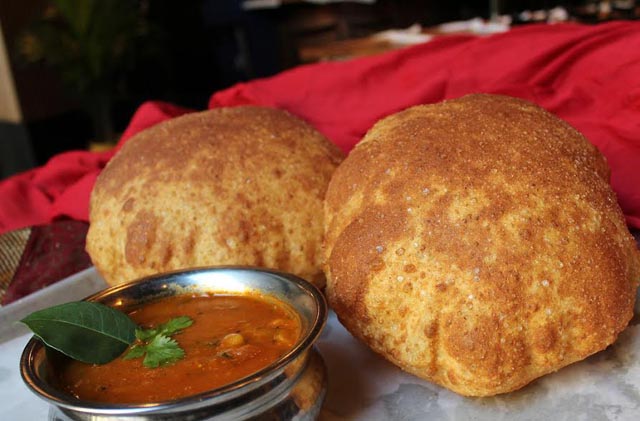
The Samosa Fix
[dropcap]A[/dropcap]ll the same, there are many fans of Indian food, people who cannot live without their samosa fix and their dash of desi spices, and this is not only people from the Indian sub-continent but also people of every race, some of whom have traveled to India or had an interaction with Indian spices, even in their own cuisine.
Indeed, many innovations and changes are taking place, and American cuisine too is getting spiced up with these desi contributions. For years many restaurateurs tried to play it safe with the tried and true – the chicken-tikka-saag paneer mantra – but now some bold spirits are striving to give diners a rich, authentic taste of India’s diverse cuisine.
Celebrity chefs are now big in Indian cuisine and you have noted names including Floyd Cardoz, Hemant Mathur, Vikas Khanna, Suvir Saran, Maneet Chauhan, Surbhi Sahni and Jehangir Mehta in New York who have reinterpreted Indian cuisine for American audiences. Indian food has gone way beyond the standard dishes into many permutations. Suvir Saran, who was the chef at Devi, has seen the entire gamut of the cooking life from creating to teaching to writing, and is the only one to be a full-fledged farmer growing his own produce and livestock at American Masala Farm with his partner Charlie. They have now launched a new restaurant with Roni Mazumdar in Manhattan called Tapestry.
Celebrity Chefs, a New Food Vocabulary
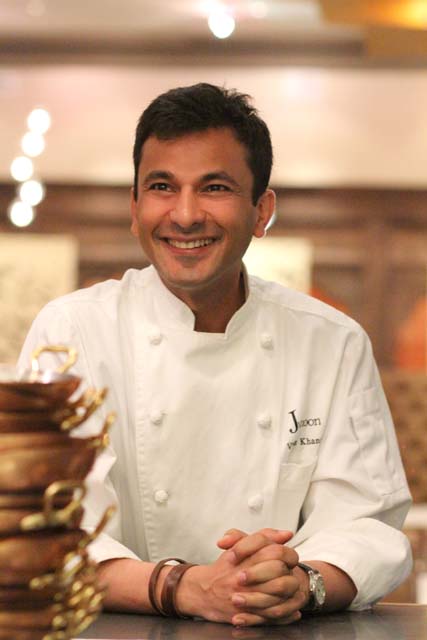
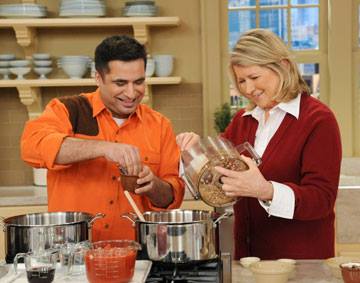
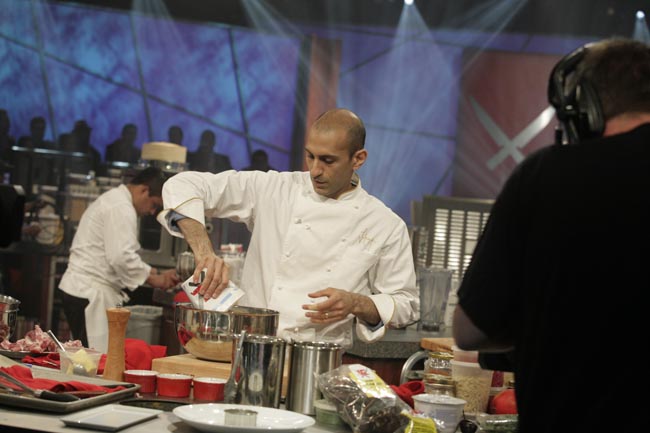
[dropcap]A[/dropcap]ccording to a National Restaurant Association report on menu trends in 2015, “An evolving trend for the past decades, ethnic cuisine continues its inroads into mainstream menus. As American palates become more sophisticated and adventurous, so do restaurant offerings. Micro-trending in this category is fusion cuisines, as well as authentic and regional, underscoring the breadth and depth of flavors being explored. Also, ethnic ingredients, including cheeses, flour and condiments, are increasingly finding their way into non-ethnic dishes. Specific dishes, such as ramen, ethnic street-food and kids’ entrees are also gaining momentum.”
While in the past all Indian restaurants seemed to have a standardized North Indian menu, there’s now an enterprising cast of characters from celebrity chefs to start-up dreamers to foodies going professional. New York City is full of hundreds of Indian restaurants, many of them helmed by celebrity chefs, such as Tulsi’s new chef Eric McCarthy. Frequently there are even reverse mini migrations taking place. The noted chef Floyd Cardoz who was the first Indian celebrity chef with the defining Tabla Restaurant recently became the chef at the mainstream American restaurant, North Grill and then White Street in New York. Now he’s moved on and has opened Paowalla in New York and is also the culinary director of Bombay Canteen in Mumbai.
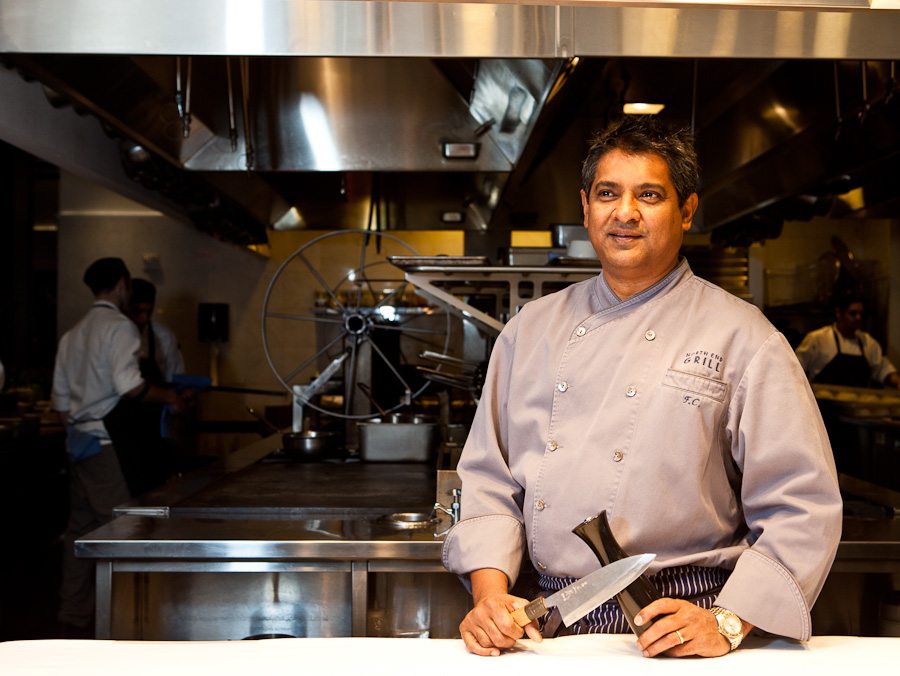
Indian Food on two continents
[dropcap]I[/dropcap]n the true global spirit, Cardoz has a foot in both continents and has just opened a cafe in Mumbai called Bombay Canteen which offers his own interpretation of dishes from his childhood such as Goan Pulled Pork Vindaloo, Chicken-Kokum Chilli Fry, and Brown Butter and Green Chili Dosa. He also has desserts which make you want to fly back to India to check them out – Gulab Nut (gulab jamun old monk style with pista cream) and masala chai popsicles.
So what exactly is a Gulab Nut? Eplains Cardoz, “A Gulab Nut is an Indian expression of a cronut, it’s a cross between a gulab jamun and a Baba Au Rhum. It’s shaped like a donut and is soaked in Old Monk’s Syrup.”
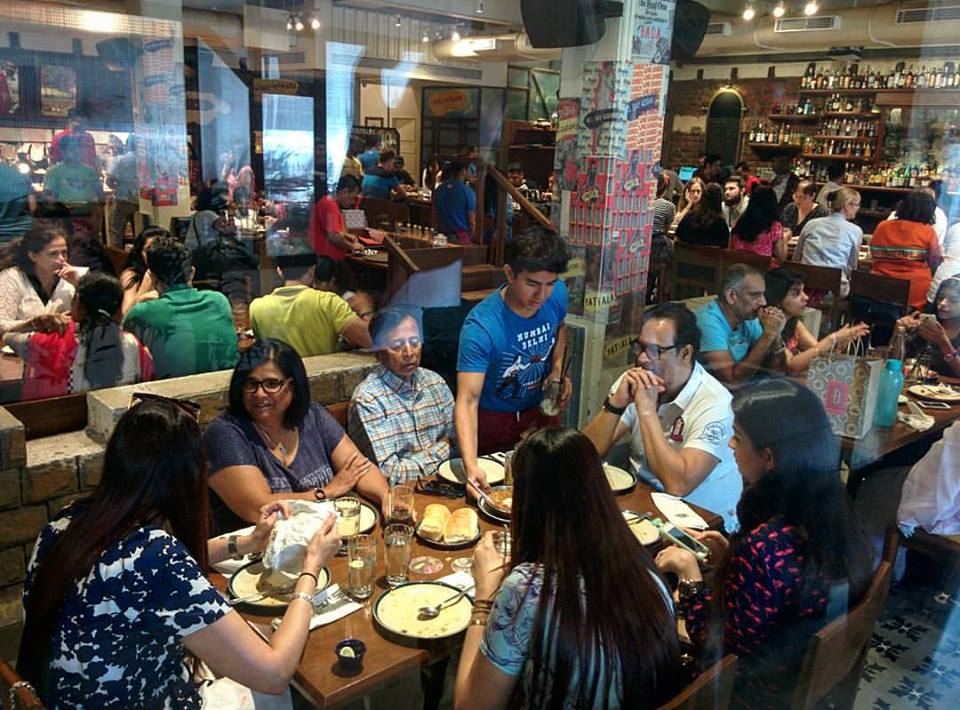
NYC, Capital of Desi Food
[dropcap]N[/dropcap]ew York City is the American capital of desi food with several topnotch restaurants such as Tulsi, Junoon, Amma, Tamarind, Devi and Benares, many headed by noted chefs. Vikas Khanna of the Michelin starred Junoon has entered the culinary celebrity strata big time by becoming the host of the popular TV Shows, MasterChef India, MasterChef Junior and Coastal Curries. Rajesh Bharadwaj, the owner of Junoon has started looking globally and has opened a second Junoon in Dubai in Sheikh Zayed Road’s Shangri-La Hotel.
There is constant movement in New York’s Indian food industry, and chefs continue to create and expand their horizons. Hemant Mathur, a noted tandoor master and Michelin starred chef, first associated with Devi and then with Tulsi, now has moved to managing not one, not two but six Indian restaurants in New York. He is a chef who knows so much about Indian cuisine that he is able to orchestrate all the different flavors and spices of all these regional cuisines. During his early years in New York, he contributed to the success of some of the city’s top Indian restaurants, including Tamarind, Diwan and Amma.
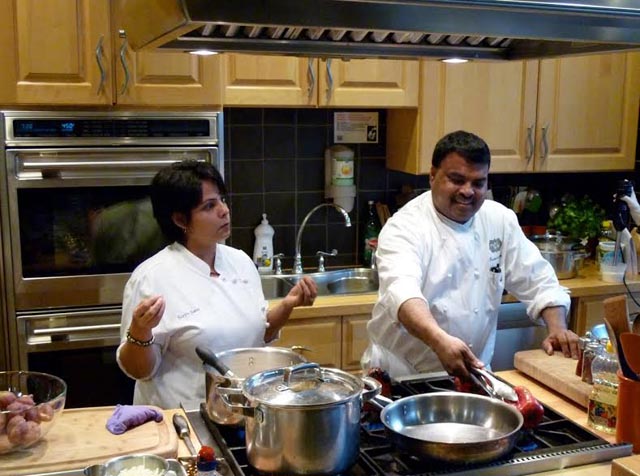
Mathur has taken the lead on nurturing regional cuisine in New York by opening the new restaurant ‘Haldi’ which showcases Bengali food, and taking over as executive chef and co-owner of five existing regional restaurants which had been started by food veteran Shiva Nataraja who is now embarking on a return migration to India in pursuit of the elusive ultimate Indian sauce. He promises to return with this enticing creation to the US!
The five restaurants that Mathur has acquired are Chola, Kokum, Chote Nawab, Dhaba, and Malai Marke. He is now in charge and overseeing the kitchens and menus, creating signature dishes and specials inspired by each venue’s regional focus. His wife Surbhi Sahni has been the pastry chef at noted American restaurants and has now founded Bittersweet NYC, for sweets and confections.
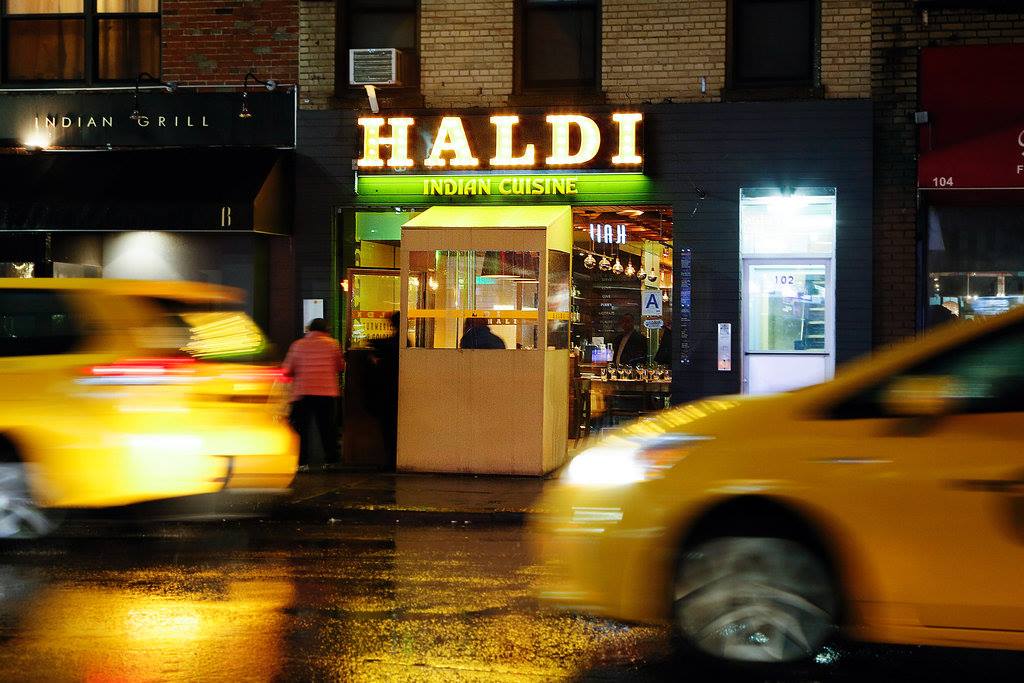
Old Delhi to New York
[dropcap]S[/dropcap]o everywhere you see innovation and creativity in Indian food. Happily you don’t have to go to Old Delhi to savor the food of Moti Mahal – it’s right on the Upper East Side in Manhattan. It is owned by Gaurav Anand, a young chef who has opened 3 restaurants with lightning speed – Bhatti Grill, Moti Mahal Delux and now, Awadh, a bastion of Lucknowi cuisine. At Awadh, New Yorkers get a taste of complex regional food such as Galouti kababs and Ulta Tawa Paratha.
As a serial restaurateur, Anand hopes to open a small restaurant which would serve only 4o dinners a night and be open only 8 months months a year where he would serve the fruits of his travels and experimentation. As he says, “”In Spain they’ve done it – why can’t we do it?” he says. “I’d like to do it if I have the chance and if I have the money – in fact, I’m sure I’ll do it! Again it’s a risk – but I’ve already taken three good risks and they have all paid off!”
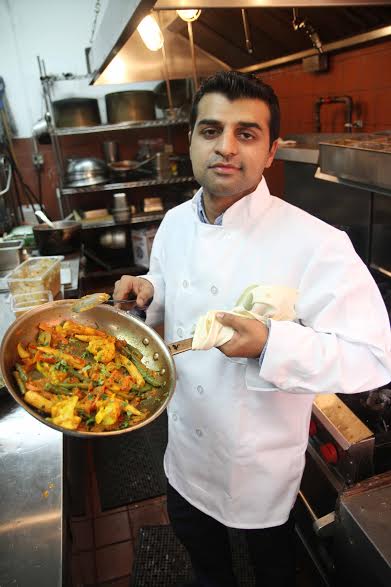
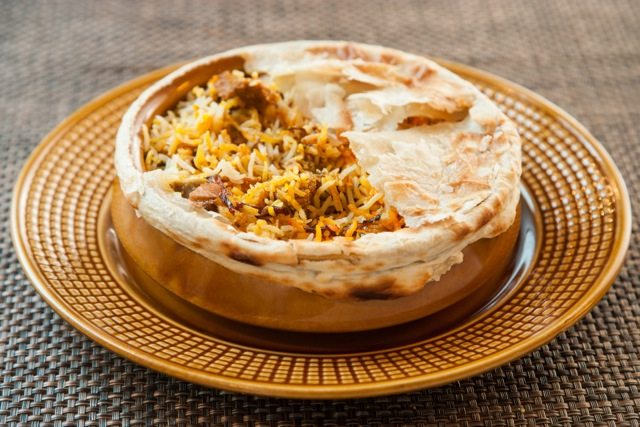
And that brings us to the question – Is Indian food becoming American food? It will as more Americans become comfortable with its spices and tastes and that happens when Indian restaurants set up home in American neighborhoods, and it becomes a food to be enjoyed by Americans of all cultures. There’s Masalawalla, a popular neighborhood restaurant downtown, frequented by desis and Americans. “The MasalaWala is our way of bringing local flavor across the globe, and wrapping it up in a cozy neighborhood restaurant that appeals to all five senses,” says Roni Mazumdar who owns the eatery with his dad.
He points out that 4 years ago, Indian cuisine was primarily split in two categories, upscale or a hole-in-the-wall – there was no real middle ground where the general population could enjoy high quality cuisine without breaking the bank: “That is changing and chefs are also focusing on regional cuisine from India as well as re-invention of Indian cuisine where the contemporary chefs are putting a global spin on Indian techniques and spices. Look out for our upcoming Mahi Mahi Malvani!”
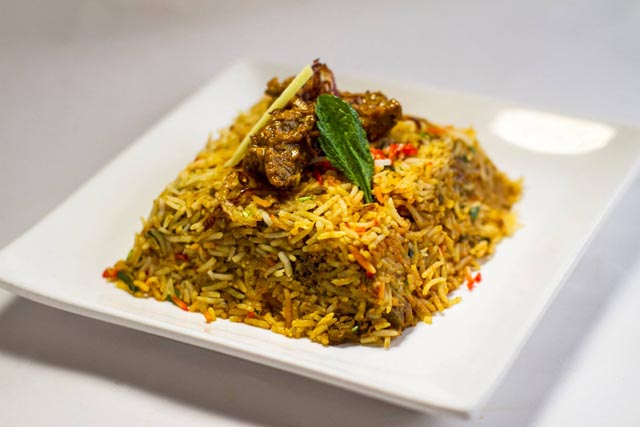
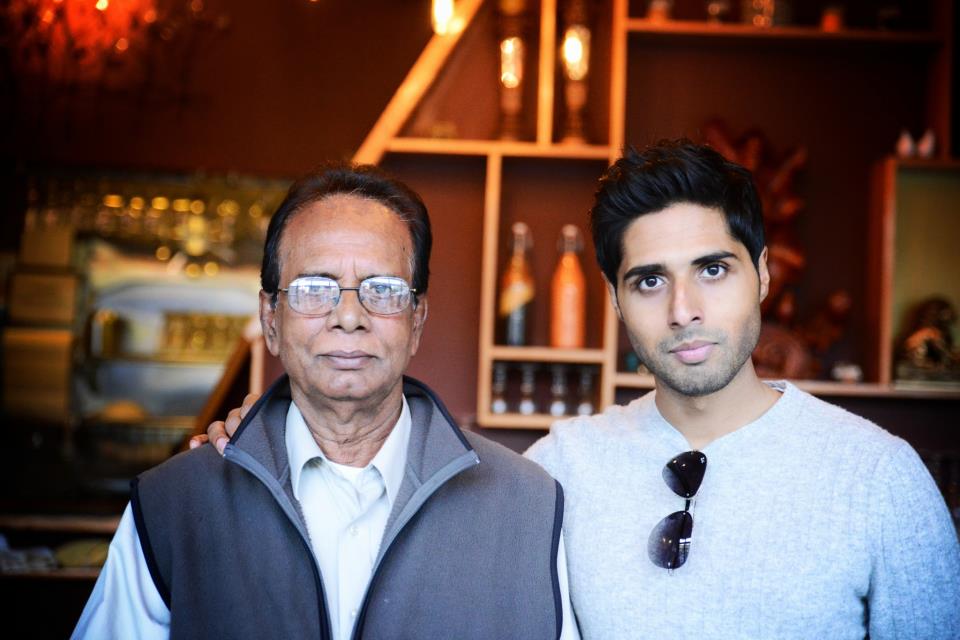
[dropcap]A[/dropcap]nother fun spot which appeals to the younger generation is Bombay Duck in West Village, the popular haunt of students from New York University. This tiny space specializes in home-cooking, dishes inspired by the family meals the Vaidya family eat at home in Mumbai, and this includes Vada Pav Smash, Burji Rice and Mom’s Toasties. Rujata Vaidya, a choreographer who runs the restaurant with her parents and husband Ravi Pillai, says: “We kept the menu to simple home cooking – we’ve taken the commercialization of Indian cooking out of it. I don’t know anyone who eats Chicken Tikka Masala at home – so our dishes are what you’d eat at home.”
When you talk of culinary crusaders you have to also mention Payal Saha whose Kati Roll Company has brought these delicious treats to the streets of New York, which urbanites can grab and go. There are already three branches in New York and one in London. Besides the desi fillings, Saha has also introduced organic salads with three Indian-inspired dressings – mint yogurt, lime cilantro and cumin mustard. In keeping with the health conscious crowd, these fillings are also served on a whole wheat roll.
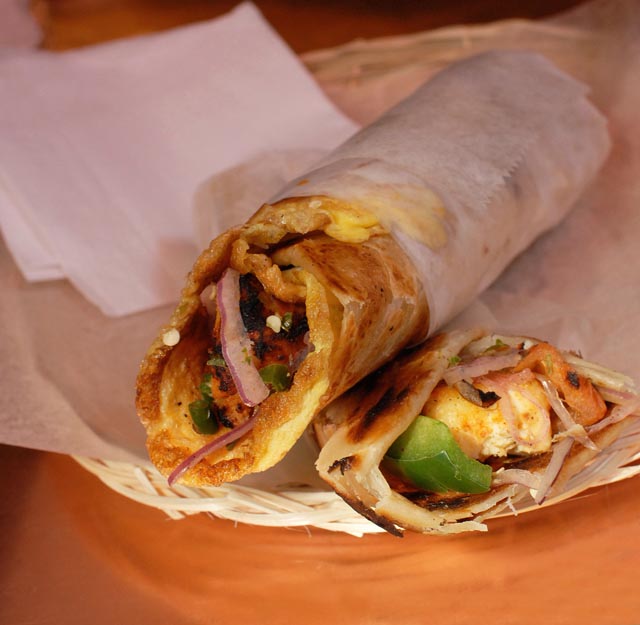
The Indian Thali – konkan Crabs and Mirchi ka Salon
[dropcap]I[/dropcap]ndian food is bursting at the seams and it’s everywhere Indians are. So it is by no means confined to New York and a few states with large Indian populations but in many different states. Prasad Chirnomula is the chef behind four Thali restaurants in New Haven, CT – and even a Mexican restaurant, Oaxaca Kitchen. At the Thali restaurants the cuisine is from all over India with dishes such as Konkan crab from Kerala and Rajasthani kababs and Lalmas from the North. Chirnomula is bringing Hyderabadi cuisine to Americans with such specialties as Degchi Briyanis, Dum Ka Murgh and Mirchi Ka Salon.
Thali Two which is a contemporary eatery on the Yale campus is totally vegetarian with focus on South Indian tiffins and snacks like dosas, idla and vadas as well as chole bathura, poori bhaji and pav bhaji. Total approval from the Ivy Leaguers!
I asked Chirnomula if Indian chefs can move into other cuisines with ease, and he said: “Mexican was an easy transition for me as it has similar spices and preparation techniques. Both cuisine styles also utilize careful preparations of their sauces such as curries and moles. There are many talented Indian chefs who can bring their unique style to other cuisines and actually enhance them. I recently made a sea bass with a standard American recipe and added Indian spices to turn it into a wonderful multicultural dish.”
Maneet Chauhan, the New York chef, is also going places. Indian chefs are certainly getting noticed by the mainstream. Chauhan is a judge on Food Network’s Emmy Award nominated show ‘Chopped’. In fact, she’s the only Indian women chef to ever compete on Iron Chef and Next Iron Chef.
Earlier she was the chef at Vermilion in Chicago and New York and now has taken the big step of going to Nashville to open her own restaurant, Chauhan Ale & Masala House. Can bhangra and dhols be far behind in the Capital of Country Music?
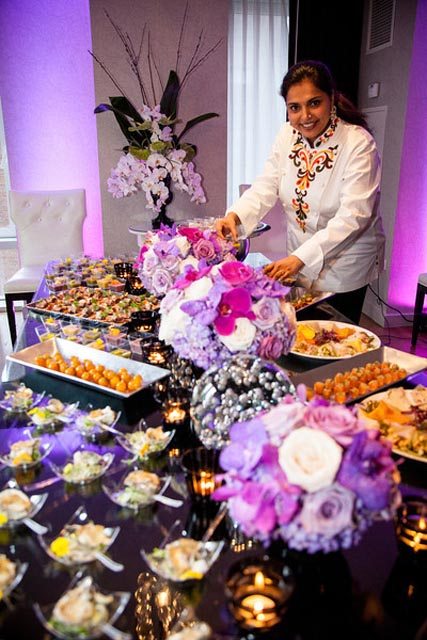
As co-owner and Executive Chef, Chauhan is offering her take on Indian food with some Sothern flavors. On the menu is Malai Methi Salmon served with kalonji sauteed collard greens. Something as American as burgers is anointed with mint and served with masala fries. Yes, traditional and modern are mixing in this Punjabi American chef’s kitchen!
If we all have become global, can we deny our tastebuds the seduction of multicultural flavors? At home we may add green chilli and masalas to our spaghetti or add Thai spices to our chicken, and chefs are also taking note. Vermilion is the noted restaurant in Chicago and New York which offers Indian food with a Latin beat. Rohini Dey is the owner-creator of the concept and she recently introduced a new group of chefs and new menu.
Railroad Chicken Curry, Chili Cheese Omelets
[dropcap]T[/dropcap]he Drunken Munkey is a new restaurant in New York which specializes in Anglo-Indian food, with dishes such as Railway Chicken Curry and Anglo Indian Beef Stew. Mom’s cheese toast is there too! The owner Arun Mirchandani has brought a whiff of nostalgia into New York’s dining scene but with a ample dose of whimsy too. Using his mother’s home recipes along with a dash of the Raj, there are also dishes such as Sindhi fish curry, Churchgate Pao Bhajji sliders as well as Chili Cheese omelets. It’s a nod to the bistros and supper clubs of ‘Old Bombay’ and certainly offers a different angle to Indian food usually seen in the US. There’s the feel of a neighborhood place and the cheeky monkey theme is bound to make you smile.
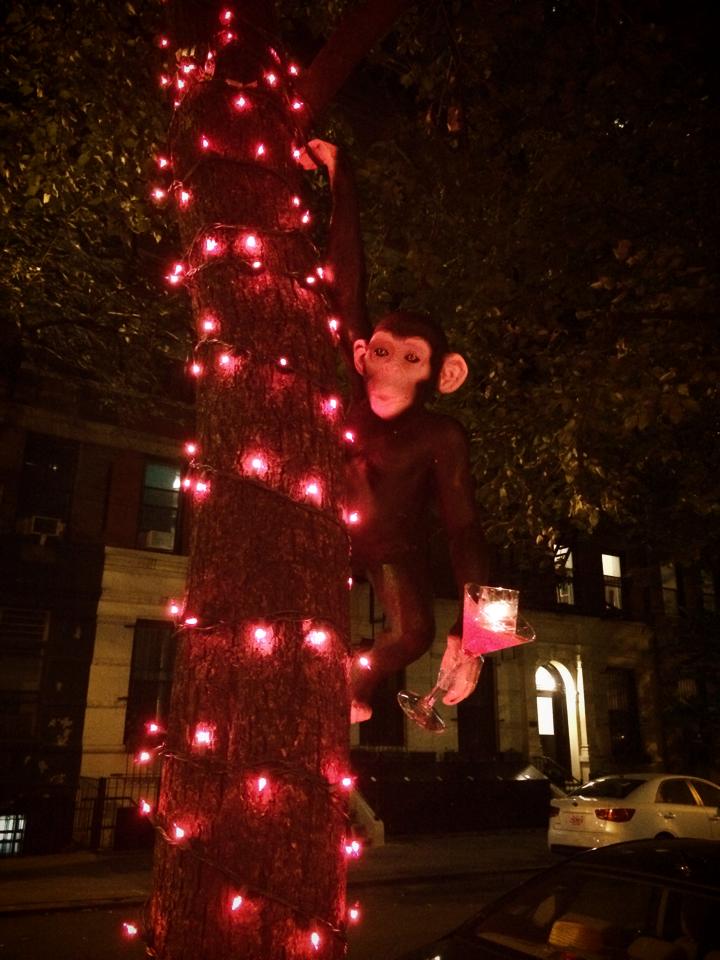
Redefining the Dosa
[dropcap]T[/dropcap]he fun element is also coming into Indian food which generally takes itself very seriously, apart from the ‘bindaas’ (carefree) street foods. Three start-up guys Jawahar Chirimar, Sam Subramaniam and M. Mahadvan decided to create the desi Chipotle, using the dosa as the centerpiece. Soho Tiffin Junction offers quick and easy meals with a healthy slant – dosas made of wheat and oatmeal batters served with salads and sides. This novel concept has a nutritional calculator, so you know exactly how many calories you are eating (dishes from 450 -900 calories) allergen information, and vegan offerings too. The fun part is you can pick your own fillings and have it within a rice bowl or a dosa or a salad bowl.It’s all gluten-free and sandwiches have also been added. This first eatery is near New York University and the hope is that young people will connect to Indian food their way, using digital ordering.
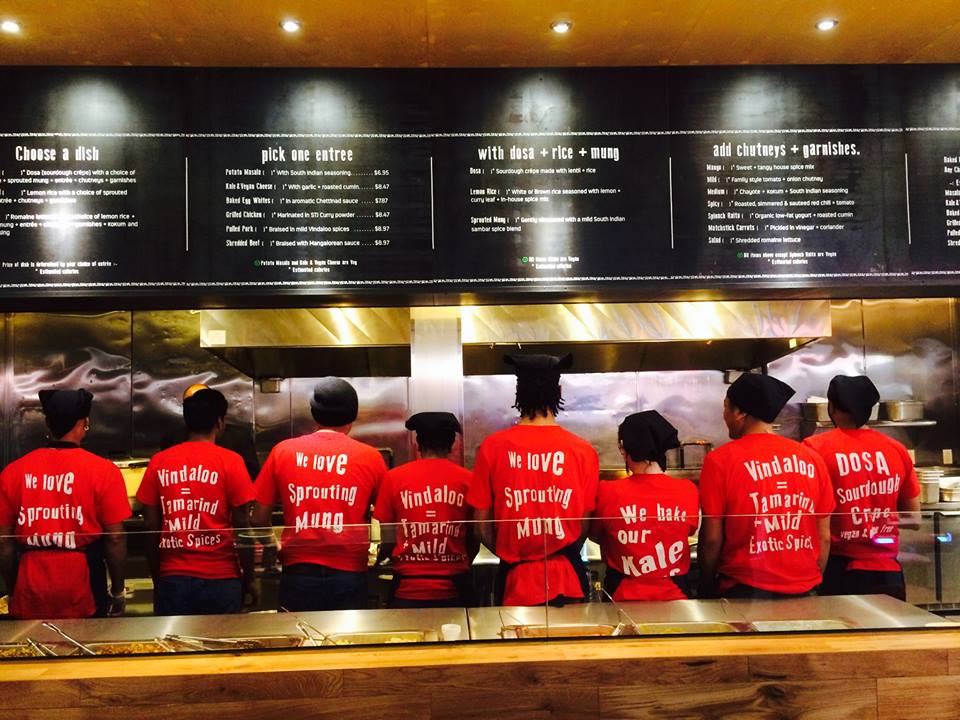
Dosas have become hugely popular in New York and Thiru, a Sri-Lankan cook and his famous dosa cart are well-known in the Washington Park area near New York University. He is the one who made this Southern staple accessible to students who may have never eaten a dosa before. Now you see the huge crowd surrounding it at lunch time.
Besides all the dosa places in Little India, including the ever-popular Sarvanna Bhavan, this Southern treat is now available at Whole Foods in Tribeca, New York’s hip supermarket. Dosateria is a cafe created by chef Hari Nayak who is the creative chef of Cafe Spice which provides Indian food at this supermarket and now a fiery sambhar and dosa is possible while shopping for groceries.
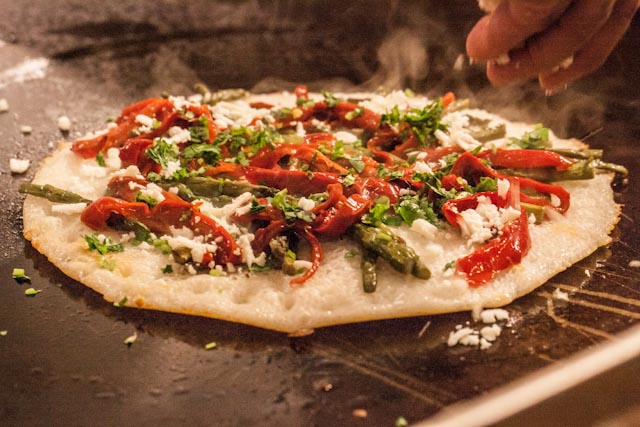
Both authentic and contemporary dosas are served, with signature fillings like pulled butter chicken, Tofu Masala, Chili Chicken Koftas, and chutneys like Wasabi Avocado, Mango Fennel. In serving their mainstream consumers, Dosateria offers fusion breakfasts which probably would not be available at a regular desi dosa place but are an interesting addition for those mixing east and west. These fusion breakfast dosas include filling of fried egg, sauteed spinach and spiced hash brown potatoes and cheese, and a breakfast uttapam topped with fried egg, roasted onions, tomatoes, fire roasted red peppers and mushrooms.
Indian Food in America
[dropcap]W[/dropcap]hat is particularly telling is the way Indian food is going underground and seeping into the fabric of America. One of the culinary crusaders responsible for this is Sushil Malhotra, who heads Cafe Spice. He is one of the veterans of the Indian food revolution and had earlier opened several restaurants including Dawat, which had the noted food authority Madhur Jaffrey as the consultant.
His Cafe Spice Express is a popular bistro in Grand Central, bringing Indian food to thousands of commuters. At the same time, the Cafe Spice company manufactures and provides Indian meals for flights, airports, colleges and corporate lunchrooms. The culinary director is Hari Nayak, a noted chef who also has written several cookbooks. Cafe Spice also manufactures ready to go meals, refrigerated products and fresh Indian food at Whole Foods besides running the Dosateria. In this way, slowly but surely Indian food is becoming a part of the American table.
Indeed, if Indian food has to succeed in a big way in America, it needs to be reinterpreted and transformed in its interaction with the New World, and many young Indian chefs are on the frontlines, training to do just that.Indian food may not be everyone’s cup of chai but it’s winning new converts every day, thanks to our bold and enterprising culinary crusaders!
Indian Treats, American Style
(C) Lavina Melwani. A version of this article was first published in Khabar.
Related Articles:
Street Smart Indian Foods
What’s Cooking with Maneet Chauhan
New York’s Hottest Chefs

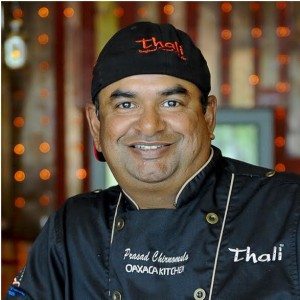
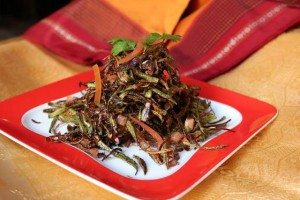
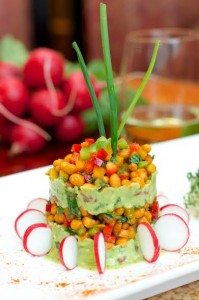
3 Comments
Nice article and you just made me hungry. Indian food in the US has come a long way since the early 90’s. There were hardly any gourmet restaurants at that time. Most of the restaurants in Chicago’s Devon Avenue offered standard fares. I vividly remember having dinner at the Klay Oven, class apart from others, in Chicago in 1993 – a unique restaurant which no longer exists, as I have come to understand.
Even in those days desi food in NYC stood out. Shaan near Central Park used to be good (not sure if it’s around now). There are small restaurants in MacDougal street that serve amazing Kathi rolls. While on consulting trips to White Plains, a bunch of us would drive all the way down an hour+ one way for dinner, just to enjoy good Indian food in NYC. Hotel Saravana Bhavan opened for breakfast in 2008 – first desi restaurant to be open for bfast in the US, I’d reckon.
Taste and quality in Kailash Parbat in Lexington Ave in NYC is not the same as in Mumbai or Singapore. There’s a difference in quality and the one here in NYC is inferior, no doubt.
Thanks Shagun! it’s really about the changing NYC scene over the years, and now Gaurav is a part of it!
Shagun Mahendru via Facebook
Superb article Lavina! You have really captured the essence, variety and the plethora of Indian cuisine in NYC, and also the advancements it has made from the traditional chicken curry to so much more! Kudos to the chefs and restaurateurs for bringing Indian food mainstream. Gaurav Anand read this!